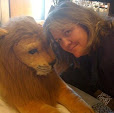I was absolutely delighted to reread Gods, Graves, and Scholars: The Story of Archeology with the GoodReads group True Book Talk. I last read it when I was in my mid-teens, and it sparked my lifelong interest in Troy, Pompeii, and the entire ancient Mediterranean world.
Rereading it was an absolute treat, and I was so surprised to find that it is translated from German. Once I found that out, I did a little research on the author, C.W. Ceram.
C.W. Ceram was the pseudonym of German journalist and author Kurt Wilhelm Marek, known for his popular works about archaeology. He chose to write under a pseudonym to distance himself from his earlier work as a propagandist for the Third Reich.
Ceram was born in Berlin. During World War II, he was a member of the Propagandatruppe. His works from that period include Wir hielten Narvik, 1941, and Rote Spiegel - überall am Feind. Von den Kanonieren des Reichsmarschalls, 1943.
In 1949, Ceram wrote his most famous book, Götter, Gräber und Gelehrte — published in English as Gods, Graves and Scholars: The Story of Archaeology — an account of the historical development of archaeology. Published in 28 languages, Ceram's book eventually received a printing of over 5 million copies, and is still in print today.Here's his obituary in the New York Times, which is worth reading lest you think that his work during WWII makes this book not worth reading. BTW, Ceram is sort of a backwards spelling of the author's real last name, Marek, which makes me smile.
The translation by Sophie Wilkins was absolutely brilliant. The book didn't ever read as a translated book, which can sometimes feel a bit formal or stilted. On the contrary, the book was easy to read, chock full of anecdotes and colorful asides, idioms, witticisms, and dry humor.
Now, about the book itself. It covers Pompeii, Troy, Mycenae, Crete, Egypt, Assurpanipal, Assyria, Babylon, Sumeria, Chichen-Itza, Mexico, Guatemala, et al, as well as the archaeologists (like Schliemann, Winkelman, Evans, Carter), the code-breakers (like Champollion, Grotefend), and plunderers (Napoleon, Cortes).
It truly is a survey of archeology through the middle of the 20th century, and while theories have evolved as more sites have been more fully excavated and science has advanced the ability to date objects, the history of the study of the ancient past remains riveting.
In the closing chapter, Ceram talks about what he doesn't include, namely the vanished civilizations that were in India and China. Despite those omissions, the book does cover a great deal of ground.
More than that, though, the author imparts his enthusiasm for his subject and makes me long to visit the sites, read more about each area, and definitely reread this book for a third time.


It sounds quite interesting ... I was pretty big into archaeology in college. I'm sure such a survey would be good for me to revisit the subject. I hope it made for a good discussion book with the group. Thx for bringing this book to my attention.
ReplyDeleteHow fascinating! It would have been a pity if his tainted past had prevented such a book from reaching a wide audience. I know you share my delight in occasionally rereading a book: sometimes I think it prevents me from reading something new but there can be such pleasure in remembered phrases or contrasting one's reactions then and now (if recalled).
ReplyDeleteThis sounds very much worth the read. Archeology seems so interesting, I wish that I knew more about it. It is actually awe inspiring that all these civilizations existed in the past but are now gone.
ReplyDeleteI also got interested in archaeology and also paleontology as a teenager. I sort of wanted to become one but I don't think I have the patience to dig through all the flotsam to find significant artifacts. But isn't story telling part of archaeology? Only the story is of a civilization or culture now lost to us. No wonder it appeals to readers. :D
ReplyDelete